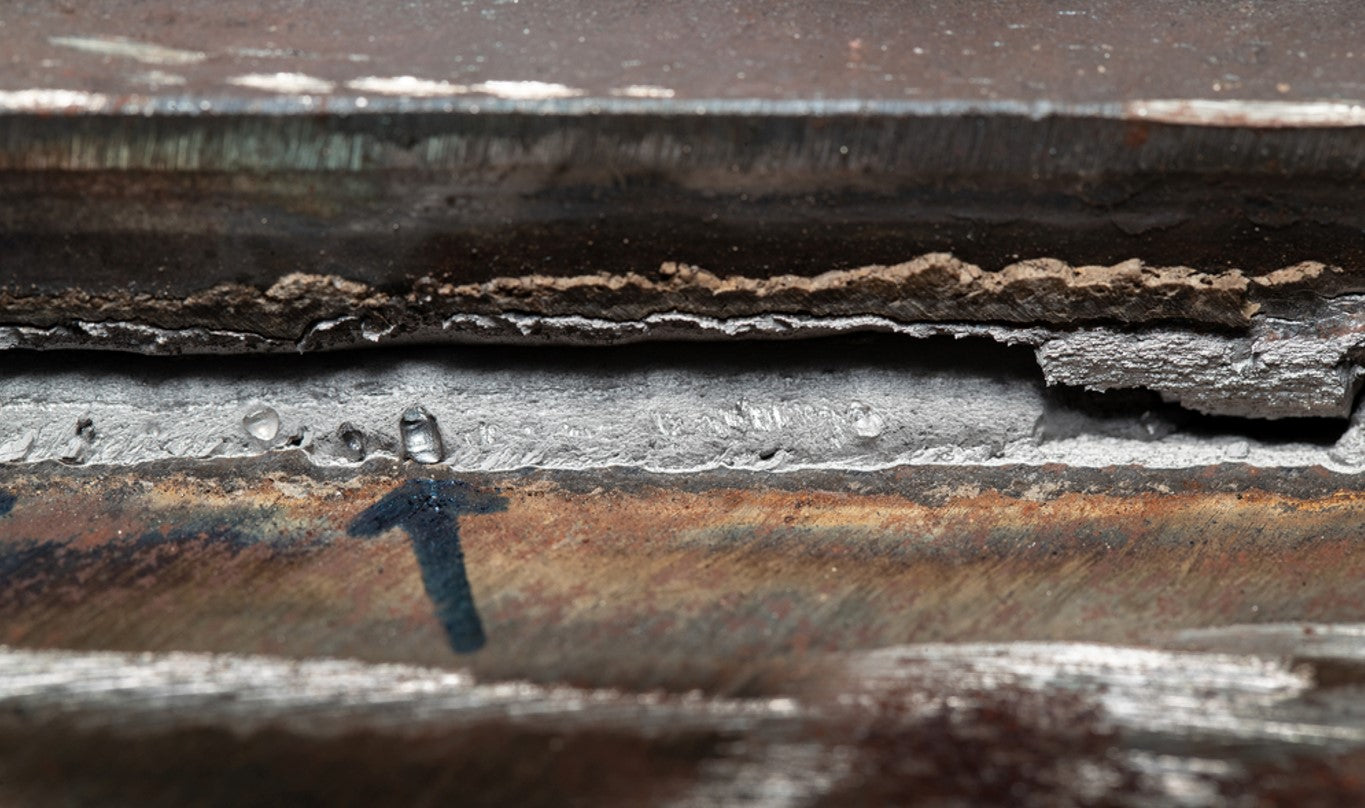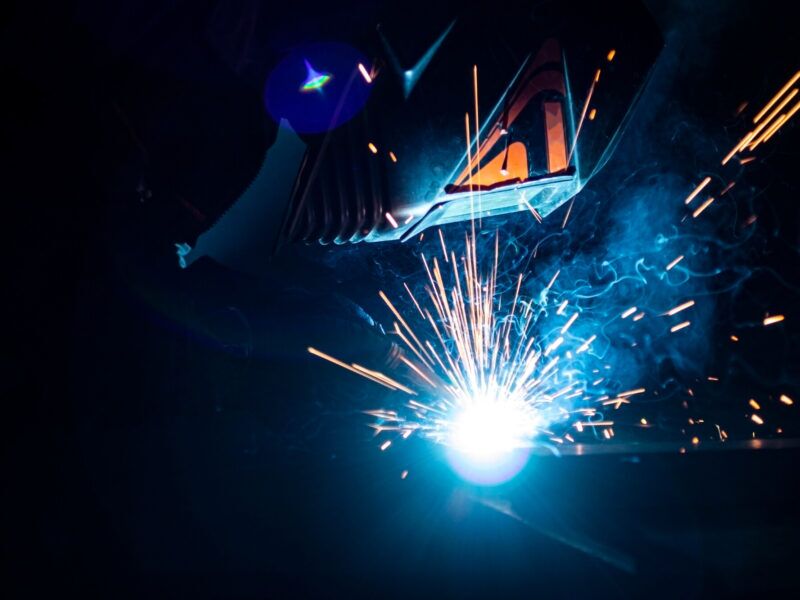Preventing Weld Undercut Demystified: Strategies for Success
Preventing Weld Undercut Demystified: Strategies for Success
Blog Article
Comprehending the Causes and Solutions for Undercut Welding in Metal Manufacture Processes
In the realm of steel construction processes, the occurrence of undercut welding presents a substantial difficulty that demands a comprehensive understanding of its reasons and feasible solutions. The intricate interplay of various factors throughout welding procedures can result in this undesirable sensation, impacting the structural stability and general high quality of the welded joints - Preventing weld undercut. By dissecting the origin of undercut welding and checking out efficient remedial procedures, fabricators can raise the requirement of their craftsmanship and guarantee the production of flawless steel parts
Usual Causes of Undercut Welding
Often forgotten in metal construction, undercut welding happens because of various variables that demand meticulous attention and knowledge to be properly alleviated. One typical cause of undercut welding is excessive warmth input. When the heat input is also high, it can cause the melting and succeeding disintegration of the base product along the edges of the weld joint, developing a groove or undercut. In addition, incorrect welding strategies, such as using the wrong welding angle or take a trip speed, can likewise add to undercut formation. Insufficient securing gas insurance coverage is another vital element that can result in undercutting. Inadequate gas coverage stops working to protect the weld pool adequately, resulting in oxidation and undercut defects. Moreover, the option of welding criteria, such as voltage, existing, and cable feed rate, plays a significant function in the occurrence of undercut welding. Understanding these common reasons is crucial for carrying out precautionary procedures and guaranteeing top notch welds in steel construction processes.
Effect of Incorrect Welding Parameters
Incorrect welding specifications can dramatically compromise the stability and high quality of bonded joints in metal manufacture processes. The influence of inaccurate welding specifications manifests in numerous ways, leading to architectural weaknesses and problems in the welded elements. One important aspect influenced by incorrect welding specifications is the penetration deepness of the weld. Insufficient warm input due to reduced welding currents or excessively high travel speeds can cause inadequate combination between the base steels, resulting in insufficient joint infiltration and weakened bonds. Conversely, extreme heat input triggered by high welding currents or slow-moving traveling rates can lead to burn-through and too much support, producing a fragile and unsteady weld structure. Additionally, wrong criteria such as incorrect voltage settings or incorrect electrode angles can add to irregular weld grain accounts, lack of blend, and enhanced chances of issues like damaging. As a result, meticulous attention to welding specifications is paramount to guarantee the manufacturing of high-quality welds with the wanted mechanical buildings and architectural stability.
Result of Improper Lantern Angle
Incorrect lantern angle in welding procedures can considerably impact the top quality and honesty of the last weld joints in steel construction procedures. The lantern angle plays a crucial function in figuring out the warmth input and circulation throughout welding. When the torch angle is inaccurate, issues such as damaging can arise. Damaging is an usual welding issue where a groove develops along the weld toe, damaging the joint and compromising its structural honesty.
A torch angle that is also steep can result in not enough penetration, insufficient combination, and increased spatter. On the various other hand, a torch angle that is as well shallow can lead to excessive penetration, burn-through, and distortion of the base product. Preventing weld undercut. Proper torch angle is important for ensuring constant weld top quality, stamina, and look
To avoid damaging and various other problems brought on by improper lantern angles, welders need to be educated to preserve special info the appropriate lantern angle throughout the welding process. Normal monitoring and modification of torch angles during welding can assist accomplish audio welds with marginal defects.
Role of Inadequate Welding Techniques

An additional facet of inadequate welding methods is incorrect weld prep work. Poor cleansing of the base steels, wrong joint design, or insufficient edge preparation can all add to undercut welding. Additionally, insufficient protecting gas insurance coverage or making use of the incorrect kind of gas can cause insufficient blend and the development of undercut issues.
To address the role of inadequate welding strategies in steel manufacture procedures, it is important to supply detailed training for welders. Appropriate education on welding parameters, joint prep work, and securing gas choice can help prevent undercut welding and ensure high-quality welds in steel fabrication jobs.
Effective Solutions for Undercut Welding
Dealing with undercut welding in steel construction requires carrying out effective options to enhance weld top quality and structural integrity. Among the primary solutions to battle undercut is to change welding parameters such as voltage, existing, and take a trip speed to make certain appropriate heat input and combination. By fine-tuning these settings, welders can protect against extreme melting of the base steel and filler material, reducing the probability of undercut formation.
Furthermore, proper joint prep work is essential in preventing undercut. Making sure tidy base metal surface areas totally free of impurities and using the ideal bevel angle can help advertise far better weld penetration and minimize the risk of undercut - Preventing weld undercut. Utilizing ideal welding techniques, such as weaving or oscillating the lantern, can also help in dispersing heat uniformly and loading the weld joint properly, lessening the opportunity of undercut problems
Moreover, picking her explanation the correct welding consumables, including electrodes and filler steels, is crucial in reducing undercut. Utilizing products with appropriate chemical compositions and mechanical properties can contribute to accomplishing audio welds with very little undercut. Normal examination and quality control measures ought to likewise be carried out to find and resolve undercut concerns promptly, ensuring the overall integrity of fabricated metal components.

Conclusion
In conclusion, understanding the causes and solutions for undercut welding in steel manufacture procedures is vital for attaining high-grade welds. By resolving typical causes such as incorrect welding parameters, improper lantern angle, and poor welding methods, welders can avoid undercutting and ensure solid, long lasting welds. It Visit Your URL is necessary to take note of these elements and implement reliable remedies to enhance the overall welding process and last product quality.

Report this page